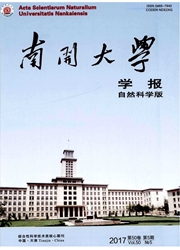

 中文摘要:
中文摘要:
从新疆油田石油污染土壤中分离到一株菲降解菌FM-2,经初步鉴定为伯克霍尔德氏菌(Burkholderia sp.).采用液体培养的方法,研究了菲的初始浓度、培养天数、温度、pH、盐度对FM-2菌株降解菲效果的影响.结果表明菌株在菲浓度为300-600 mg/L范围内培养3 d降解率均高于85%;条件实验表明,温度15-35℃、pH 5-9、盐度0-1%条件下,接种2 d后菲(300 mg/L)降解率在80%以上;经HPLC-MS分析表明,菌株FM-2降解菲的途径为水杨酸途径;初步研究发现该菌株中含有的双加氧酶大亚基保守区氨基酸序列与已报道的伯克霍尔德氏菌K24的萘1,2-双加氧酶基因保守区氨基酸序列相似性为99%.
 英文摘要:
英文摘要:
A phenanthrene-degrading strain FM-2 was isolated from oil contaminated soil of Xinjiang Oil Field and identified as Burkholderia sp., which could use phenanthrene as sole carbon source. The effect of initial concentration of phenanthrene, culture period, inoculating temperature, inoculating p H and salinity on degradation efficiencies was investigated. The results showed that the degradation rates after three days were higher than 85% when the phenanthrene concentration was in the range of 300-600 mg/L; the degradation rates of phenanthrene(300mg/L) were greater than 80% after two days when cultivated under the conditions as: 15-35 ℃, pH 5-9, 0%-1% NaCl; it was suggested that the strain possessed the salicylic acid pathway by LC-MS methods; One fragment of the dioxygenase gene was obtained by PCR with size 306 bp, which was closest to the counterpart from Burkholderia sp. K24 1,2-naphthalene dioxygenase with 99% similarity.
 同期刊论文项目
同期刊论文项目
 同项目期刊论文
同项目期刊论文
 期刊信息
期刊信息
